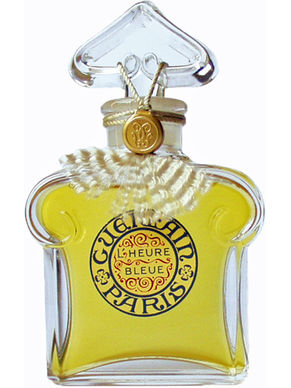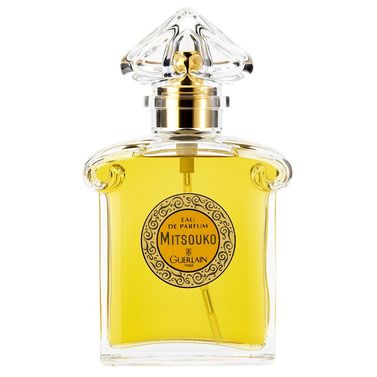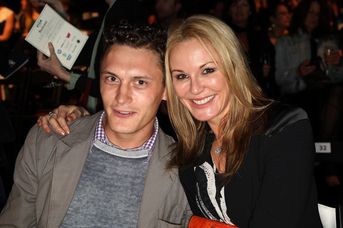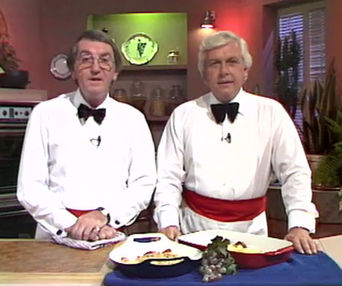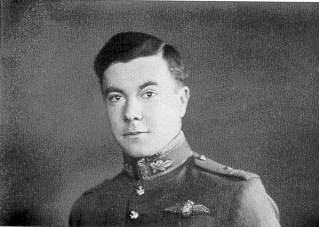Martin Aston’s just-released Breaking Down the Walls of Heartache: How Music Came Out is one of those books that seems to have been a long time coming. It is a history of the popular music which has been produced by queer musicians over the last hundred years.
With stories ranging from the bisexuality of some early Black American Blues artists to singer, song-writer and rapper, Frank Ocean, via the 1930s Pansy Craze, Disco, Glam Rock, Punk, and lesbian folk, it is a comprehensive and all-embracing story.
Martin Aston is a story-teller. Breaking Down the Walls of Heartache is a history based on human lives and what happened in them. It is also a narrative of how individuals and groups struggled to express their sexual preferences through music, often at odds with a society or a recording industry.
Sometimes Aston’s history involves repression and silence. At other times, the closet door opens and songs and artists were able to reflect upon themselves and their world through the lens of sexual preference or gender diversity.
Aston is a widely-published British music journalist and writer. His books include Pulp (MacMillan, 1985), Björkgraphy (Simon & Schuster, 1996), and Facing the Other Way: The Story of 4AD (The Friday Project/Haper Collins, 2013).
Breaking Down the Walls of Heartache will become and remain the standard work on the queer music and musicians for some time. Aston’s research is broad and detailed. He provides anecdotes and illustrations, and sometimes surprising revelations about the sexual lives of the musicians and singers who are so much a part of our culture.
The following is an edited version of an email conversation that took place recently. Breaking Down the Walls of Heartache: How Music Came Out by Martin Aston (Little, Brown Book Group) is available as a hardback with a 16 pp colour insert.
- David Herkt
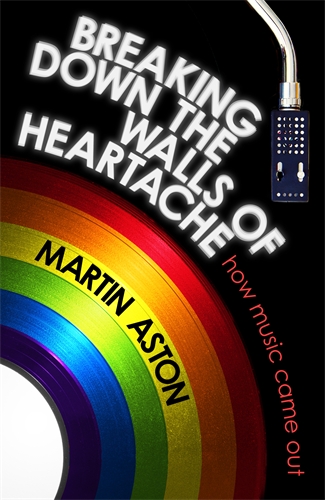
'Breaking Down the Walls of Heartache' is one of those books that once you've read it, you wonder how we survived without it. It suddenly becomes very strange to think that it has taken so long for us to have such a broad, readable, and complete overview of a century of popular music as produced by gay, lesbian, and transgendered artists. It is 560 pages, covering scores of musicians, and a full range of genres. It is informative, entertaining, frequently moving, and often surprising. What was the direct impetus to write it?
There had been various music compilations through the years, such as Sissy Man Blues, but it wasn’t until 2006 that a CD, Queer Noises 61-78: From the Closet To The Charts, compiled a list of songs that had no genre focus, only that it was about gay life. It began in 1960, with a clip of drag queen and pioneering activist José Sarria from The Black Cat bar in San Francisco, and ended with Sylvester’s disco classic “You Make Me (Feel (Mighty Real)” in 1978. But I was deep in magazine/editor mode, and not planning to write more books. I’d done a couple in the Nineties, and realised that I enjoyed getting out of the house occasionally, a luxury that writing books rarely allows…
Then in 2012, I was asked to write an ‘evolution of gay rock’n’roll,’ for the UK monthly magazine Attitude, and that, combined with Queer Noises, was like a wake-up call. By then, I’d gone freelance again, and started writing a book (Facing The Other Way: The Story of 4AD) about the iconic British independent label) and it dawned on me that a book about the history of music from a gay and lesbian – or queer, or LGBTQ – perspective was another book that I badly wanted to write.
Preceding books had tackled the subject, but only as a series of essays - starting with US writer Boze Hadleigh’s The Vinyl Closet: Gays In The Music World, 1991. He aimed to do for music what the late Vito Russo did with Hollywood in his landmark book (and later, film documentary) The Celluloid Closet, the conversation about the achievements and influence of gay, lesbian and bisexual singers and musicians, and naming names - though he listed the most obvious, famous artists, included gossipy interview material from anonymous sources, and, bizarrely, finished up with chapters on ballet and film!
In the Nineties, UK writers John Gill’s, Richard Smith and the late Kris Kirk wrote far better books, but similarly kept genres such as glam, disco and punk separate (likewise various academic studies, such as Queering the Pitch: The New Gay and Lesbian Musicology). But in light of the forthcoming fiftieth anniversary of The Sexual Offences Act 1967, which finally decriminalised male homosexuality (albeit in only England and Wales, and between two consenting adults over the age of 21), a palpable sense of LGBTQ history – the journey taken, and the advances made, and in some instances, regressions – was in the air, and it struck me a book that needed to be written too, as it hadn’t been done before, and certainly not as a chronological narrative, which fulfilled the function of explaining how popular music came out of the closet.
One satisfying aspect of the book was the reclaiming of many forgotten artists. I chose to focus on the pioneers, in their era and across the genres, who were first to declare themselves, either by force of personality or deed, despite the legal and moral restrictions of the day.
So it’s a book about the likes of Bruz Fletcher, Frances Faye, Billy Wright, the Roc-A-Jets, Jackie Shane, Alix Dobkin, Handbag, and many more, but also more famous names such as Little Richard, David Bowie, Bronski Beat, k.d. lang, because they were pioneers too. I don't feel gay icons like Kylie or adopted gay anthems like Abba’s ‘Dancing Queen’ have any part in this history, though Rod Stewart’s ‘The Killing of Georgie’, does. Stewart wasn’t gay, but his song was the first to describe a gay man, and sympathetically, and even feature the word ‘gay’, in a Top Three single.
Those kind of landmarks are recognised in my book, but it’s much more than just a ‘timeline’, I see it more as a social history as well as musical. I had begun with a ‘story of gay rock’n’roll’ angle, and then realised that the roots of rock’n’roll are in the blues, and as the Sissy Man Blues compilation will tell you, there were gay, lesbian and bisexual themes in 1920s blues, as part of the so-called Harlem Renaissance. So I started, in earnest, in the Twenties (actually, earlier than that, just to see what was out there), and realised I had a hundred-year history on my hands. That’s when I knew I wouldn’t be leaving the house much, except to do interviews…
Ma Rainey - Prove It On Me Blues (1928)
“They said I do it, ain't nobody caught me. / Sure got to prove it on me. / Went out last night with a crowd of my friends. / They must've been women, cause I don't like no men…”
Kokomo Arnold - Sissy Man Blues (1934)
"Woke up this mornin' with my business in my hand... If you can't send me a woman, send me a sissy man..."
- - - - -
Why do you think we have waited so long for a book like this?
The answer is... I can't say for sure. Even for me, it took a long time for the idea to germinate. But I think it's something to do with the fact that popular music hasn't the same credence in queer culture as film, literature, poetry and theatre; when people think of 'gay popular music', it's disco/techno, chart pop, i.e shallow and throwaway, Kylie and boy bands, etc. Certainly, there's enough evidence that, traditionally, gay men (and I'm talking generally here) did not demand, or consume, music that mirrored the complexity of their emotions; they preferred the sound of liberation, escapism, etc, which tied in to their social pattern of clubs/bars.
When it got 'serious', it was through the highly stylised, and in a sense, equally escapist, form of Broadway (and opera), in musicals that were heterosexual in subject but could sometime be de-coded (especially when created by gay men, such as the core team behind West Side Story). When clubs sprang up in London in the mid-90s, playing indie rock, and micing it up with glam, punk etc, it was almost shocking.
The lesbian scene was/is different. There's a much smaller (almost non -existent) club/bar scene, and look at the success of '70s 'Women's Music' (as the introspective folk-based genre became known), artists such as Cris Williamson, who sold half a million records of her debut album on the lesbian-identified, lesbian-staffed, US record label Olivia, while similar gay male singer-songwriters such as Michael Cohen and Steven Grossman sold pitifully in comparison.
Things have changed, with artists such as John Grant, who is unequivocally out in his lyrics and interviews, but when he recently sold out the Royal Albert Hall (capacity around 5-6,000) it was easy to see there were far more straight couples than gay couples. Not that I took a poll or anything!
Breaking Down the Walls of Heartache is a book filled with human stories occurring over a century, from a number of countries, each with different and changing attitudes to sexual behaviours. It often works through anecdote rather than argument - you tell us what people were actually doing, often how they thought about it, and what happened to them. Any writer must have some favourite people and incidents. What were some of your own?
The one story that rises above is the Roc-A-Jets: it’s hard to imagine there was an all-lesbian – even an all-female - rock’n’roll trio in the 1950s. Now that’s brave. Lesbians were exempt from the law in a way that gay men weren’t, on the risible basis that Victorian morals didn’t accept that women had sexual feelings - and there was the belief that if they did make sex between women illegal, it might bring the ‘act’ to the attention of more women, and thus encourage it. But Baltimore in the Fifties was still conservative, and bigoted, and if lesbians didn’t fall foul of any law prohibiting sodomy, they were regularly hassled by the police, regarding the number of ‘male’ items of clothing they wore; three or more, and they could be arrested.
Also, two of the band were mothers (they’d married, and then divorced, before the band had formed) and there was always the fear they could have their kids taken into custody. But they played shows in a couple of lesbian bars, and had quite a following, who would mimic the band’s outfits (white shirts, black trews, bootlace ties, they looked like a little troupe of Buddy Hollys and Roy Orbisons!). Some fans would leave the house in their everyday clothes, and change somewhere along the way into their gig clobber; straight couples would see them play too, and there were fights with jealous boyfriends who didn’t like their girlfriends cheering on – and maybe more? – the band.
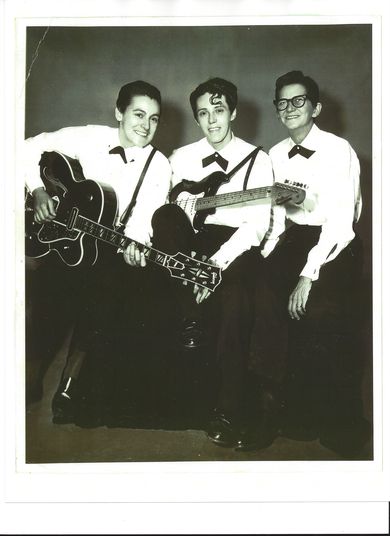
The Roc-A-Jets
I know all this because lead singer and rhythm guitarist Jo Kellum is still alive, in her eighties, and very lucid. Original drummer Edie Lippincott is too deaf to do interviews, but she sat in while I interviewed Jo on the phone. Sadly, family and gig commitments meant they never recorded, though a short clip of them playing live exists courtesy of a member of the audience. And the band survived into the 1960s.
Unfortunately, Roc-A-Jets lead guitarist Jan Morrison died in 2007, so I couldn’t get her story, and there were times when I was limited by what I could write about artists because they were long gone, and so little was written about them at the time. But through other researchers, I could get some info, and the sagas of 1930s singer-songwriter Bruz Fletcher – like a much more daring Noel Coward and Cole Porter – and 1940s/1950s cabaret singer Frances Faye are other favourites of mine, again for their brassiness and verve, pushing the boundaries of what was acceptable, and suffering to various degrees (Fletcher especially).
1950s drag queen turned 1960s LSD-gobbling balladeer Minette (who died in 2001) is another favourite. Her album – incredibly rare and it sells for thousands of dollars when one surfaces – is wonderful. It is the only durable record I know recorded by a drag artist, though she was more than that. She performed in the Ridiculous Theatrical Company, which was very influential on Warhol’s troupe, and on the Cockettes, both of which were as important to David Bowie’s glam persona as Lou Reed and Iggy Pop, and so crucial to the story of how music came out.
Talking of glam, I’m also very fond of the UK trio Handbag, who were the one bona fide gay glam band, who became the only bona fide gay new wave band too. Apart from Tom ‘Glad To be Gay’ Robinson, who talked about them in a 1975 interview, no one else ever mentioned them, or wrote about them, and their only album, Snatchin’, was only released in Italy.
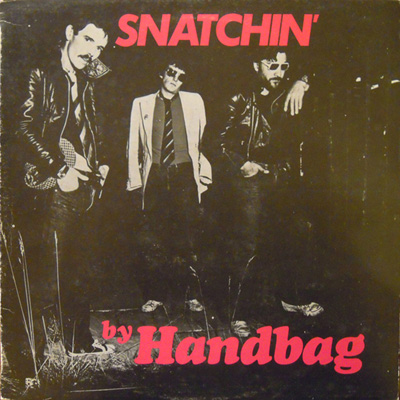
Tragedy in varying degrees – suicide, arrest, career limitations – is all too often part of these people’s stories, but there’s triumph in there too, and though laws were repealed, societal homophobia was that much more common. Then AIDS polarised people’s opinions... It was a long, bumpy ride.
You compile so much information and so much of it is new. What were the most important revelations for you?
I initially planned a book that began in the 1950s, the dawn of rock’n’roll, but then I realised rock’n’roll’s roots were in the blues, and there was a lot of bisexuality in the blues scene of 1920s Harlem – plus the Berlin Weimar era. The first pride anthem was in 1920, ‘Das Lila Lied’ (aka ‘The Lilac Song’), so that seemed a more accurate, honest and interesting place to start – and as I’d never written about the 1920s, 1930s and 1940s, and little on the 1950s, much of it was new to me.
And pre-WWI too. There were female impersonators in the 1850s, the odd (non-drag) daring music hall star at the turn of the century, such as British singer Fred Barnes. And who knew the extent of the so-called ‘Pansy Craze’ in the early 1930s?
The records released during those eras were all discoveries, and since I was zeroing in on the pioneers – those who were first to put their head above the parapet in their time – these artists were often undocumented at the time, and only in the internet age have diehard fans done a lot of research, which made my work that much easier.
One example is the saga of Camp Records in the mid-1960s, which released two albums and a handful of singles, catering to the burgeoning ‘gay party’ market, for example ‘Stanley, The Manly Transvestite’ and ‘Rough Trade’. Still, to this day, no one has a clue as to who was behind Camp.
Rodney Dangerfield - Stanley The Manly Transvestite (Early 1960s)
Camp was preceded by a 1962 record of standards, Love Is A Drag, subtitled ‘For Adult Listeners Only, Sultry Stylings by a Most Unusual Vocalist’, a male singer taking on (orchestrated) songs (for example ‘The Man I Love’) that were usually sung by women, about men. Coincidentally, it’s being reissued for the first time in November, by a US label (Sundazed).
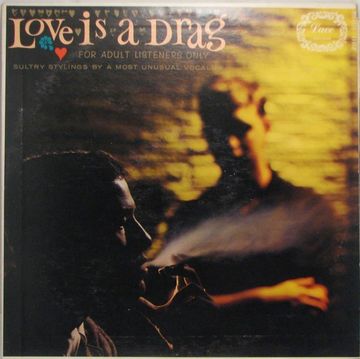
The first declared ‘lesbian folksinger’ Lisa Ben (a pseudonym for Edith Eyde, who published the first homosexual fanzine, Vice Versa, in 1947) put out a single in 1960. As a music geek, all these one-off oddities – given the time they were released in – were little goldmines of pleasure, and melody. And with great stories attached.
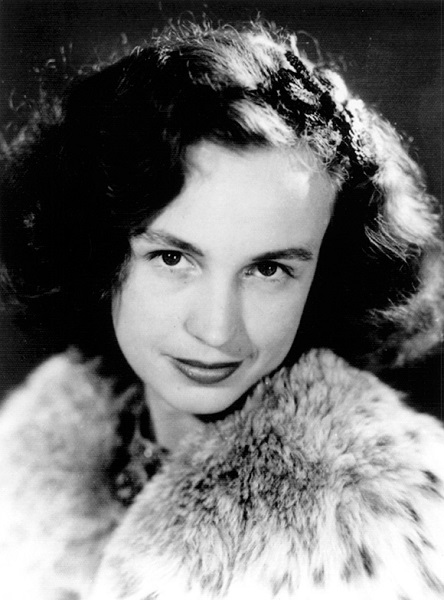
Lisa Ben - the first self-declared 'lesbian folksinger'
Musicians make music, but, as we know, music is also an item of consumption. It is connected to places of performance, mechanical and digital reproduction, advertising, magazines, books, websites - and money. At times while reading. I got the sense that the music industry from the 1930s right through to 2000 delayed coming out for both music itself and the artists who made it - often for decades based on the belief that being open about sexuality would hinder sales. I was surprised, actually, to find out how long this attitude had persisted. It seemed society had changed but the music industry hadn't. Would these be fair things to say?
It's more a matter of economics. I can understand record companies don’t want to restrict its commercial chances, so understanding the ‘One in Ten’ ratio of LGBT+ to straight, songs that expressed same-sex love would presumably not be widely consumed by heterosexual audiences.
And how could artists come out when homosexuality was against the law, and stigmatised even when the law wasn’t enforced as heavily as it once was? You’d have to put politics before music, and your career, if you were to be brave – as some were, but that’s why you never heard of many of them.
Some independent labels of the 1940s and 1950s supported the cabaret scene where ‘risque’ performers had their loyal audiences, but record sales were low, and only the likes of Liberace – whose story is well known enough not to need repeating here – thrived, because he was closeted, and successfully sued newspapers that insinuated he was gay. You can understand him suing, because those insinuations were claiming that he was a criminal by law. Post-1967, when homosexual acts were legalised in England and Wales, and post-Stonewall riot in New York in 1969, Gay Liberation kicked in, but it was David Bowie – a married dad – who led the way.
Even the Village People played coy, never used gay pronouns, and had more of a straight fan base than gay. The pioneering disco anthem ‘I Was Born This Way’ – by Valentino in 1975 and then Carl Bean’s cover in 1977 – weren’t chart hits, while Rod Stewart’s ‘The Killing Of Georgie’ (also 1977) was a huge hit – but then this was a straight mainstream superstar.
Valentino – I was Born This Way (1975)
“Oh yes I'm happy/I'm carefree/And I'm gay/Yes I'm gay/Tain't a fault tis a fact/I was born this way”
When the likes of Bronksi Beat and Frankie Goes To Hollywood broke through in the 1980s, AIDS made things very tough for people to feel confident about being out, but actually the crisis had the ironic effect of humanising the homosexual community, and straight performers rallied round, playing benefits, and made gay and lesbian performers come out as they felt guilty, and cowardly, for staying in the closet, and letting the bigots win.
Now, you have gay mainstream stars such as Adam Lambert, Will Young, Olly Alexander (of Years & Years), Sam Smith, and polysexual-promoting Miley Cyrus… but still not much in the use of same-sex pronouns in pop. Perhaps the ‘one in ten’ ratio still applies.
It strikes me that there have been some very liberal moments over the 20th and early 21st Century, and some quite repressive ones for music. You point to the 1920s and 1970s as being permissive eras for gay and lesbian music. I have to admit to being fascinated by the very explicit lesbianism of some early American black music and the blurred gay identities of the Glam era. But they were moments that didn't extend much further than their decade, did they? In both cases, musicians were back in the closet fairly soon.
The 1920s benefitted from the increased social mobility and optimism after World War 1, which all came to an end when the economic crash of 1929 turned into the Great Depression of the 1930s, and economic hardship – as we’ve since in the world since 2008 - always leads to a spike in religious conservatism and scapegoating. Before the Depression truly bit, there was this wonderful pocket at the start of the end of the ‘roaring twenties’, known as the Pansy Craze, after the Pansy Club which opened in New York in 1930, with singers such as Karyl Norman and Gene (sometimes Jean) Malin, and drag act Ray (late Rae) Bourbon, who went on to have a long and not always illustrious career on vinyl as well as in nightclubs. Similar venues opened in San Francisco too.

Jean Malin
But the renaissance party and its pan-sexual freedoms didn’t last long. The repeal of Prohibition in 1933 was also harmful as it decreased the numbers of, and the takings, in clubs, places where the first gay and lesbian communities could meet. Hollywood began its own crackdown, having been laissez faire about its own ‘production code’ of conduct set up in 1930, which included a ban on any sexualised behaviour. But the Roman Catholic church’s nationwide protest finally forced the studios to buckle down, and appoint an overseer, Joseph Breen, described as “a devout Catholic, blatant anti-Semite and homophobe.” A few bars survived, and then World War Two brought many numbers of gay men and lesbians together in the armed forces, and showed just how many of them existed.
There were odd singers who, in their own small way who continued to work such as Bruz Fletcher, but as he ran out of places to play, split up with his lover and, by now alcoholic, killed himself.
Bruz Fletcher - My Doctor (1935)
There was also Frances Faye. However, a more concerted effort to crack down on the clubs, and Senator McCarthy’s witchhunt of the 1950s victimised homosexuals as much as communists. Similarly, the British the establishment went after gay men with a vengeance.
Black America – in one sense, less rigidly overseen in terms of its own entertainment circuit – gave us Little Richard and his less documented peers Billy Wright and Esquerita, and then doo-wop figures such as Cornel Gunter (The Platters, The Coasters), but no one dared make statements in their songs about being gay.
Esquerita - Hey Miss Lucy (1958)
“Eskew Reeder (1935 -1986), usually known as Esquerita, often wore heavy makeup, sunglasses, and two wigs, piling his pompadour high on his head. It is speculated that Reeder was an influence on Little Richard. The two were friends and may have had a sexual relationship.”
Then in the 1960s, there was a short-lived phase of gay ‘party records’, to cater to the emerging gay market, based in Bob Mizer’s physique/beefcake magazines and literature that had escaped censorship, epitomised by the LA label Camp Records, who I’ve already mentioned. There were occasional references to homosexuals in odd places, but it wasn’t until Bowie made his “I’m gay” statement to Melody Maker in 1972, that performers truly articulated any aspect of their same-sex attraction.
You have stories of repression that range from a dramatic change in the lyrics of the 20th Century's most famous song to whole careers being 'blighted' by a musician's sexuality. What were some of the greatest instances?
Little Richard’s ‘Tutti Frutti’ was voted the number one in music monthly MOJO’s 100 Records That Changed The World and described as rock’n’roll’s ‘big bang’.
The song’s producer realised that Richard’s original was a barely disguised ode to anal sex: ‘Tutti Frutti, good booty / If it don't fit, don't force it / You can grease it, make it easy’ – so he got a lyricist in to help rewrite it – which is why we have “Tutti Frutti, aw rooty”.. What a shame! We could have had an ode to gay sex in the charts 30 years before Frankie Goes To Hollywood’s ‘Relax’! I doubt Little Richard felt repressed, though, he was probably glad to have the chance to put out the record, his first six singles hadn’t charted so time was running out.
But one particularly sad story was that of Troy Walker, who’d found work in Hollywood’s clubs and bars, drawing on influences from Little Richard to the Platters and carving a reputation for impersonations, including Dinah Washington and Johnnie Ray. He’d started recording in 1961, and then released a live album Troy Walker Sings in 1962, which explored soul, rock’n’roll, Latin, cabaret, show tunes, and, notably, covered ‘Happiness is A Thing Called Joe’, written by Harold Arlen and Yip Harburg of Wizard Of Oz fame, and popularised by Judy Garland. But he found out that the track was the reason that stores returned the album, and his recording career stalled and never recovered.
Johnnie Ray was another. The ‘Nabob of Sob’ had a huge number one US hit in 1951 with ‘Cry’, but the root of his angst was soon revealed after news leaked that he’d been arrested just one month before ‘Cry was released, for soliciting an undercover policeman in Detroit’s Stone Theatre, a burlesque club known locally as a homosexual rendezvous. Ray hadn’t even requested a jury trial, pleading guilty and paying a $25 fine, probably in the hope it would stay undiscovered. But sudden fame changed all that, with the mercenary Confidential, a new magazine centred on scandal and gossip, blew his cover, and his career stuttered and stalled after that.
Johnnie Ray – Cry (1952)
The late David Bowie is a fairly key character in the history of sexual presentation in modern popular music, but he isn't a simple example, is he?
Yes, Bowie’s absolutely key, because he was the first in rock music to write about gay sexuality and be gender-fluid, but he was far from a simple example. In 1967, Lou Reed had written about drag queens in the Velvet Underground’s ‘Sister Ray’ and that “sucking on my ding-dong” line, and about trans issues in ‘Candy Says’ in 1968, but with the latter, you’d had to have known he was referring to Andy Warhol ‘superstar’ Candy Darling for it to have context.
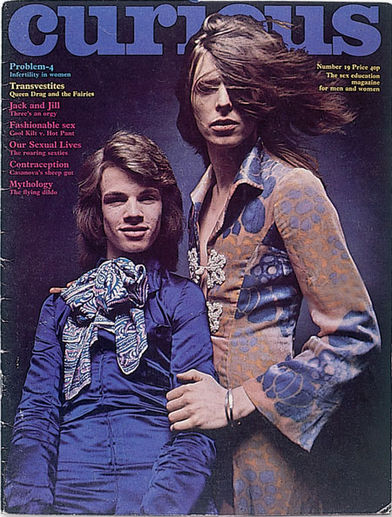
"On the cusp of stardom, a young David Bowie models a Michael Fish dress on the cover of a 1971 Curious - the ‘sex education magazine for men and women.’
In 1967, Bowie’s quasi-music hall ditty ‘She’s Got Medals’ addressed a woman pretending to be a man – and seducing women – in the army. But in 1970, ‘The Width of a Circle’ concluded with a homosexual seduction - he gets “laid by a young bordello” . . .and then “[he]e swallowed his pride and puckered his lips / And showed me the leather belt round his hips…” and “His nebulous body swayed above/His tongue swollen with devil’s love…”
Then Bowie wrote ‘Queen Bitch’ but again, you’d have to be clued-up to truly get the gay-relationship context. In other words, there was nothing political about Bowie’s actions, and though he came out with the “I’m gay” statement when ‘selling’ Ziggy Stardust, his bisexuality seemed more related to power: all the men that we know Bowie slept with were people who could further his career - while feeding his insatiable need to experiment - and as soon as he became famous, he stopped (well, every affair he subsequently had was with women) and he even, for a time, recanted on himself ever being bi.
Those artists that were political at the same time – records such as Everyone/Involved’s ‘A Gay Song’, Madeline Davis’ ‘Stonewall Nation’ and Maxine Feldman’s ‘Angry Atthis’ - were private press releases with, at most, a thousand copies made, and in their own way, they might have inspired others to come out, and have a domino effect. But Bowie’s example, ironic though it was because of his ambivalence toward gay rights – he was categorical about not wanting to be associated with Gay Lib – was that much more far-reaching. He made being gay, or just different, daring and colourful rather than shameful. He liberated gender, dressed it up with fashion, and theatre, and made it cool. Political statements driven by angst, or anger, frightened some people. Think of the number of gay men and women at the time, and how small Gay Pride marches were.
Gay men have not often been entirely supportive of gay musicians, to put it mildly, whereas lesbian women have seemed to be far more interested in lesbian musicians describing lesbian experience. This strikes me as a little odd. Gay men have often championed and indeed formed a huge part of the market for heterosexual women singers (the prime example being the Disco era) but the same can't be said of lesbian women, who have often supported lesbian musicians, lesbian music venues, and even lesbian labels.
On an online forum about gay and lesbian folk music, Goldie01 posted the comment, “Someone once said that gay men want to be entertained and lesbian women want to be ‘validated’. That’s pretty general but I think there’s a germ of truth in it.”
In the early days of Gay Liberation, men clearly chose a soundtrack to their freedom, hence disco, music for nightclubbing. The first wave of angsty gay singer-songwriter records, Michael Cohen’s What Did You Expect: Songs About the Experiences Of Being Gay and Steven Grossman’s Caravan Tonight sold very little in comparison to Cris Williamson’s album The Changer And The Changed, which launched the so-called ‘Women’s Music’ movement, selling half a million copies but because it sold via mail order, feminist bookshops and women-only events, the album never registered on any chart.
Preceding Williamson, Alix Dobkin’s Lavender Jane Loves Women was another landmark record that sold really well. Lesbians had more of a need to politicise their sexuality because it was, to coin a phrase, “a man’s, man’s, man’s world.”
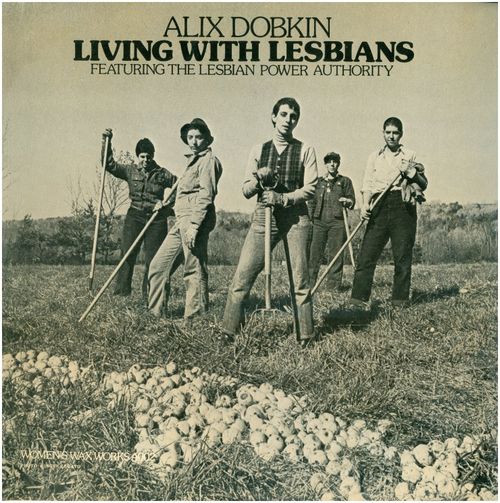
According to writer Alice Echols, the mixed-sex Gay Liberation Front dances of the early 1970s “were meant to engender love and acceptance and to create community… However, GLF dances also featured a mirrorball, go-go boys, and to some radical lesbians a lot of ‘groping and dry-fucking’ among men as well.” It was felt that gay men would selfishly commandeer the agenda of gay rights, and that heterosexual women – because of their relationships with men – wouldn’t commit to ending male supremacy.
So the lesbians formed their own events, and organisations, and agenda, including the independent record label Olivia, every facet of which was orchestrated by women, from production to distribution. They released the Williamson album, and other iconic lesbian performers such as Meg Christian and Holly Near. It was all part of the seismic wave of feminism at the time; there was no such thing – or apparent need – for ‘masculinism’. The first gay-orientated ‘Man’s Music’ equivalent, a compilation called Walls To Roses: Songs of Changing Men, also sold very little, despite being released by the pioneering label Folkways, which also released Cohen’s album. There was no demand.
Is all of this this changing now we are in the 21st Century?
It took AIDS to truly – or widely – politicise gay men, and that was mostly in the US, while Section 28 – arch-homophobe Margaret Thatcher’s Conservative government ban (via the Local Government Act of 1988) on any ‘promotion’ of homosexuality as an acceptable alternative lifestyle galvanised the UK’s gay resistance, prompting the creation of the grassroots organisation Stonewall. But even then, the only politicised gay man who had prolonged chart success was Jimmy Somerville, first with Bronski Beat, then the Communards and finally as a solo act – and he only managed it because he also released a string of cover versions of disco classics.
Tom Robinson, after ‘Glad To Be Gay’, only had one big hit single, and his albums through the 1980s were not mainstream hits. In the early 1980s, Boy George/Culture Club and Marc Almond/Soft Cell didn’t come out or use male pronouns in their songs. Frankie Goes To Hollywood, after ‘Relax’, faded fast. We had gender fluidity but there were few openly gay songwriters. Patrick Fitzgerald of Kitchens Of Distinctions and the late Spud Jones of Tongue Man, and the neo-punk band The Apostles, all ‘indie’ rather than mainstream, were it.
Sigur Ros - Viðrar vel til loftárása (2008)
But now, the number of openly gay artists is too long to mention them, but when writing a feature in 2012, I did make a list, and included Ed Droste (Grizzly Bear), Hercules and Love Affair, Jónsi Birgisson (Sigur Rós) Bradford Cox (Deerhunter), Patrick Wolf, Jamie Stewart (Xiu Xiu), Hunx and his Punx, Nico Muhly, Perfume Genius, Rostam Batmanglij (Vampire Weekend), Owen Pallet, Junior Boys, Matmos. And, over in Lesbianville: Tegan and Sara, Yo! Majesty, Telepathe, Sia and MEN.
Tegan and Sata - Boyfriend
'You turn me on like you want your boyfriend /But I don’t want to be your secret anymore...'
Look at John Grant, who’s couldn’t be more brazenly, blatantly, ‘out’ in his lyrics, so angsty and angry – as well as funny and clever – and he sold out the Royal Albert Hall in London last year, which holds approximately 7000.
John Grant - Down Here (2015)
'What we've got down here / is oceans of longing'
All around, there are declarations of love, sex, gender fluidity, anti-homophobia – and look at Frank Ocean, getting props from the hip hop community, and the androgyny of an artist like Young Thug – and out singers and songwriters in Country, another former bastion of homophobia. Despite the ‘No Homo’ lyrical trick around 2009-2010 – instigated by Kanye West, who’d made some pro-gay comments in the preceding years! - hip hop has dialled right back on the homophobia. I think if Eminem – another arch homophobe - came out with another stupid demeaning homophobic lyric, he would be mocked rather than appreciated.
It’s a cliché to say so, but we really have come a long way. In parts of Africa, and the Middle East, though, that journey is only now beginning. In other words, declarations against the vicious repression of the statute books, with outside help from the West, and outlets via the internet, can mean that even artists in Uganda are starting to sing out.
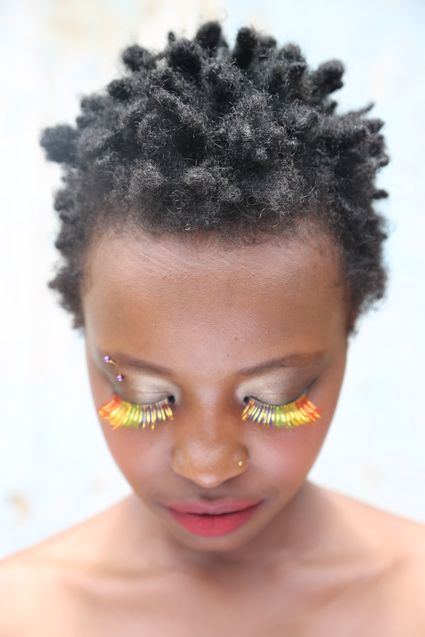
Rainbow Riots - Uganda [Image by Tania Marti]


